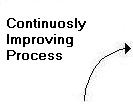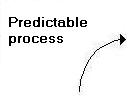What is the Capability Maturity Model for Software
The Capability Maturity Model for Software (CMM) is a framework developed by Watts Humphrey of the Software Engineering Institute (SEI). CMM describes the key elements of an effective software process. It has an evolutionary improvement path from an ad hoc, immature process to a mature, disciplined process. The model was first used to evaluate the capability of software suppliers to the US Dept of Defense.
The scope of the CMM covers practices for planning, engineering, and managing software development and maintenance. When followed, these key practices improve the ability of organizations to meet goals for cost, schedule, functionality, and product quality.
The CMM establishes a yardstick against which it is possible to judge, in a repeatable way, the maturity of an organization's software process and compare it to the state of the practice of the industry. The CMM can also be used by an organization to plan improvements to its software process.
It provides a five layer model for continuous improvement.The models that the SEI is currently involved in developing, expanding, or maintaining include the following:
Capability Maturity Model Integration (CMMISM)SW-CMM® Capability Maturity Model for Software
P-CMM People Capability Maturity Model
SA-CMM Software Acquisition Capability Maturity Model
SE-CMM Systems Engineering Capability Maturity Model
IPD-CMM Integrated Product Development Capability Maturity ModelThe Structure of the CMM









